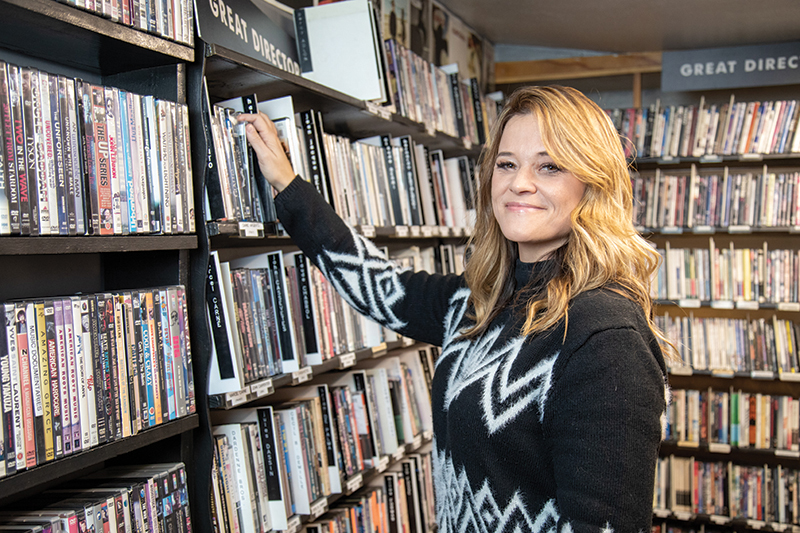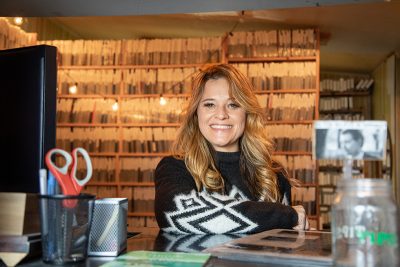
Scriip: Making it a little easier to tell your story
Art
A decorated screenwriter and Cofounder of Utah’s newly available screenwriting app Scriip, Skye Emerson knows that writing is hard enough and that no roadblocks should hinder you when inspiration strikes. As a former screenwriting teaching student and alumni of UCLA, Emerson discovered the challenges that students and aspiring writers face when it comes to accessible screenwriting technology. “One of the frustrations for me is that every person has a story to tell, but they don’t know how to tell it, or they don’t have the resources to tell it,” says Emerson. As a visionary with connections in app development, Emerson was able to come together with Annie Quan, her partner and Cofounder of Scriip, to find an innovative solution.
Emerson knows that with the challenges writing can present, the tools you use should be last on that list. “I went to UCLA and realized that many of my cohorts couldn’t afford the [screenwriting] software that was available, and it wasn’t intuitive,” Emerson says. “I was teaching undergraduates who had never been exposed to the software. The challenge was tenfold there. Once they purchased the software (which was way out of their budget), they didn’t know where to start.”
Emerson’s observations posed an opportunity to solve these problems with modern app development. Using their network, the duo reached out to developers, designers and app architects to create the perfect team. Quan says, “They are world-class, create quality products and have phenomenal skills in technology and development.” With Emerson’s background in creative arts and network in tech, she wielded her knowledge to build bridges in the creative industry using the vast potential of apps. “We need to marry those worlds of technology and creative arts,” Quan says. “Developers usually don’t tap into this world, but they are needed.”
“Even to get started [with other software], you had to go several layers deep—and this was the industry standard. We want to disrupt this because we don’t believe this has to be the industry standard.”

In January of 2018, the team started working on Scriip, an easy-to-use, affordable, accessible and modernized screenwriting resource. With the Scriip team’s experience and skill propelling its development, the app was completed by June of 2018. At the moment, the app is web-based, and users just log into scriip.com, create an account, choose what project they’d like to do—you can choose between a play, a series/pilot, a musical and a story—and off you go! Conveniently, Scripp has templates for each project, so really, you just have to fill out a form, and Scriip does all of the formatting for you. “You shouldn’t need to know that it needs to be in Courier 12-point type with these margins,” Emerson says.
Scriip officially launched in November of 2019, proudly touting their app’s user experience (UX) and user interface (UI). Their UX system is designed to be intuitive and easy to use. Their UI ensures that the app looks good and has an aesthetically pleasing design with a digestible color scheme and round fonts, as they believe the visual component is one of the most important aspects to user-driven design. Scriip is also built on a framework designed not to crash the system. This is where its cloud-based capabilities come in—their limitless memory for users won’t put your workflow at risk by onloading too many users to a single server. Another asset aiding in workflow is the collaboration access that their app offers. You can share your work with others and even share notes in real time. Most importantly, Scriip values the security of your work. Using a secure database protected by SSL and Google Cloud security, Scriip understands the value of your work and guarantees it is only accessed by you.
“One of the frustrations for me is that every person has a story to tell, but they don’t know how to tell it, or they don’t have the resources to tell it.”
In addition to making the app affordable and easier to use, there are little things that really make the Scriip experience a productive one for all writing levels. “We include quick keys, short cuts—things that make the process a little easier,” Quan says. Reflecting on other screenwriting options, Emerson says, “Even to get started [with other software], you had to go several layers deep—and this was the industry standard.” This helped set forth intention during the first phases of the app’s development. “We want to disrupt this because we don’t believe this has to be the industry standard,” says Quan. With that in mind, Emerson knew she wanted to bring everything forward when visualizing the app. Scriip is designed for you to just have to click a couple times to get you writing.
Scriip also does not charge you for the 30-day trial like most apps do—you can simply log in and start using the app for free for the first 30 days. Scriip offers two projects for free, and you can archive them on the cloud and use them at any time. If you want to create more projects after the first two, you pay $9.99 a month and can cancel at any time.
Scriip isn’t limited to just screenwriting students or professional writers. “I have a friend that started journaling in this, everything saves and uploads to the cloud, so if your computer crashes, your writing is safe,” says Emerson. Thanks to Emerson, Quan and the rest of the Scriip team, you can finally sit down and write your screenplay on two star-crossed lovers or your comedy TV show about your day-to-day shenanigans with your friends. Tell your story now!
More on SLUGMag.com:
Dualist – A Film-Production Company Keeping Art in Artist’s Hands
Cinematic Dreamer? The Utah Film Commission’s Next Level Grant Program Can Give You a Boost